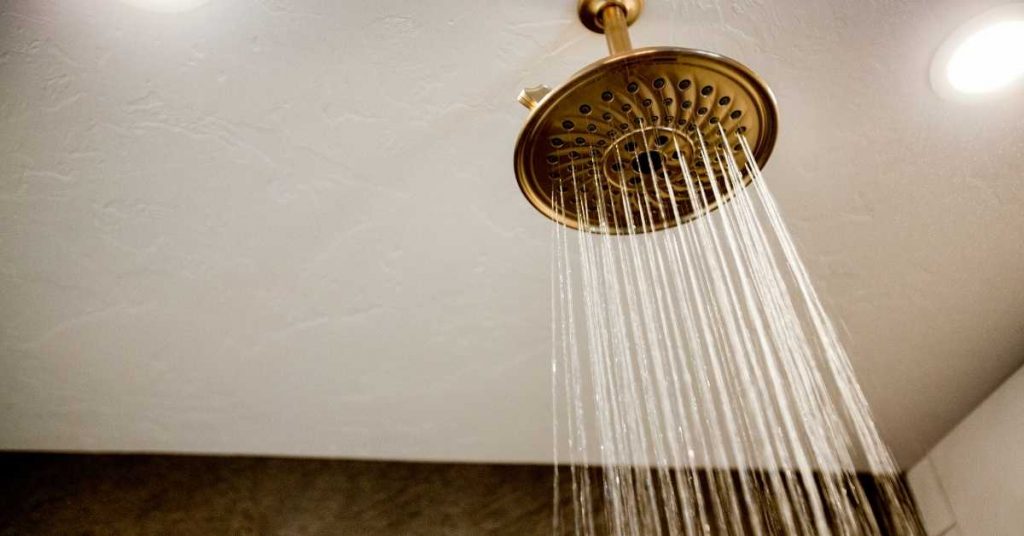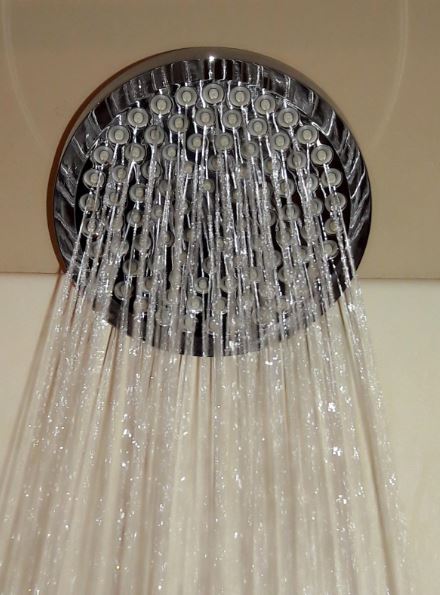
Facts About Shower Head GPM (Gallons Per Minute)
- Definition: GPM, or gallons per minute, is a measure of the flow rate of water from a shower head. It indicates how much water is delivered each minute while the shower is in use.
- Standard GPM: In the United States, the maximum allowable flow rate for shower heads is typically 2.5 GPM. This is mandated by federal regulations to promote water conservation.
- Low-Flow Options: Low-flow shower heads are designed to use less water than traditional models. They typically have a GPM rating of 1.5 to 2.0, helping to save water and reduce utility bills.
- Water Conservation: Installing a low-flow shower head can significantly reduce water consumption, conserving both water and energy used to heat it. This is environmentally friendly and can result in cost savings.
- Pressure vs. Flow: GPM affects the water pressure from the shower head. Lower GPM often means reduced water pressure, but modern low-flow designs use technology to maintain satisfying pressure while reducing flow.
- Shower Experience: GPM impacts the shower experience. High-flow shower heads may provide a strong, invigorating flow, while low-flow models offer a gentler, more controlled stream.
- Shower Head Types: Different types of shower heads can have varying GPM ratings, including rain shower heads, handheld shower heads, and massaging shower heads. It’s essential to consider your preferences when choosing a shower head.
- Shower Head Efficiency: Look for shower heads with the WaterSense label, which signifies that they meet specific water efficiency and performance criteria set by the Environmental Protection Agency (EPA).
- Flow Restrictors: Some shower heads have flow restrictors that can be removed or adjusted to increase GPM. Be cautious with such modifications, as they may impact water conservation and local regulations.
- Local Regulations: GPM limits for shower heads can vary by region and local water conservation policies. Always check your local regulations to ensure compliance.
- Flow Rate Calculation: You can calculate the flow rate of your shower head by measuring the time it takes to fill a one-gallon container. Divide 60 (seconds in a minute) by the time in seconds to get the GPM.
- Shower Valve Impact: The GPM of your shower head can be affected by the flow rate provided by the shower valve or faucet. Ensure that both components are compatible for a balanced shower experience.
Federal vs State Shower Head GPM Requirements
The 2.5 GPM shower head flow rate is the United States’ federal government requirement. Specific states gave their own requirements which all cases are lower than those of the federal government.
California has some of the strictest laws on appliances water usage. Shower heads sold in California for instance must have a flow rate of 1.8 GPM or lower.
Washington and Hawaii also have a 1.8 GPM cap on shower heads flow rates. New York and Colorado have a 2 GPM maximum flow rate requirements on all shower heads sold. More states will surely join this bandwagon.
While a shower head with a flow rate of 1.8 GPM will not provide the same showering experience as one with a 3.5 GPM, it gets the work done. You may however take longer in the shower with a 1.8 GPM that one with a 3.5 GPM.
Shower heads with a 1.5 GPM are known as ultra-low flow shower heads. On the other hand, those with a flow rate of between 1.5 and 2.5 GPM are known as low flow shower heads. No state has requires installation of ultra-low flow shower heads.
Low flow rates do not however mean a bad showering experience. Shower head manufacturers have redesigned shower heads to enhance performance while at the same time using less water. You can therefore get a 2 GPM shower with a better experience than a 3.5 GPM shower head.
Shower Head Flow Rate vs Pressure

Most people use flow rate and pressure interchangeably while talking about shower heads. That is not correct. Flow rate and pressure refers to completely different things in fluids/water.
In shower heads, flow rate refers to the amount of water in gallons that flow out of the shower head each minute. Pressure on the other hand refers to the force in pounds being exerted by the water over an area of square inch.
To get pressure, we divide force by area. That is why the units for pressure are pounds per square inch (psi).
Why is it easy to cut through a piece of meat with a sharp knife than with a blunt one, assuming the force on you hand is constant? By sharpening the knife, we reduce the area being acted on by the knife which yields more pressure.
Another example is when you have water flowing from a pipe/hose but you want it to flow farther away from where you are. What do you do? You block part of the pipe/hose with your thumb. In so doing, you reduce the area being acted upon by the water thereby increasing its pressure.
In the above example, you will have managed to increase the water’s pressure but its flow rate will remain the same.
The last example: What will happen when water flowing in a 1-inch pipe is suddenly introduced into 2-inch pipe? The water pressure will suddenly reduce but the flow rate will remain as it was before.
It is the same thing with your shower head. I must however mention that if the water pressure of your shower head is low, it will affect your shower head flow rate. More on shower pressure in this post.
High vs Low Flow GPM Shower Heads

Higher GPM shower heads are not always better than low flow GPM shower heads. Some low flow shower heads especially the WaterSense-labeled ones will not only use less water, but will also provide a better showering performance.
WaterSense is a program started by the Unites States Environment Protection Agency (EPA) that encourages homeowners to buy water-efficient appliances (faucets, toilets shower heads). WaterSense-certified appliance have a label for easy identification by consumers.
WaterSense estimates that showering accounts for 17% of the indoor water usage. That translates to 40 gallons of daily water usage by an average family and 1.2 trillion gallons per year in the entire Unites States.
How much water can we therefore save by using the 2 GPM WaterSense shower heads instead of the 2.5 GPM federal government mandated shower heads? Let us do the math.
The difference between the 2 shower heads is 0.5 gallons. 0.5 gallon of 2.5 gallons is 20%. 20% of 1.2 trillion gallons is 240 billion gallons.
If replacing a 2.5 GPM with a 2 GPM will save 240 billion gallons of water in a year, just think of the much we can save if all the existing 3.5 GPM gallons were replaced with these low flow shower heads!
According to WaterSense, a 2 GPM is not the only standard they use to certify shower heads. They have a criteria developed with help various stakeholders including consumers that test among other factors the shower head’s water coverage and spray intensity.
WaterSense also estimates that the average Unites States homeowner will save on average 2700 gallons of water per year by installing WaterSense-labeled shower heads.
Those in California, Washington and Hawaii will save even more with their state-mandated low flow shower heads. You can now imagine how much we can save if you decide to go with the ultra-low flow shower heads.
Not only do shower heads with lower GPMs save water but power as well. Using low flow shower heads means that there is a reduced demand on water heaters. This is regardless of whether you have instant or tank-type water heaters.
It is estimated that the average family can save an average of 330 kilowatt hours of electricity per year. That would be enough to power the house for 11 days.
Are Low Flow Shower Heads Effective

It is not enough to only change a shower heads flow rate. You also need to redesign it so that the water is properly delivered to the user for a better showering experience.
Unfortunately, some of the low flow shower heads on sale today don’t do that, and that is why most consumers end up removing the flow restrictor devices.
If the consumer does not remove the shower head flow restrictor, they simply stay longer in the shower. The longer they stay in the shower the more water they use.
People with thick hair need decent water pressure in order to remove all the soap from the hair. If not, they will just take longer in the shower, which is both frustrating and also takes away the joy of having a quick shower.
It is for the above reasons that most people are convinced that low flow shower heads are just ineffective or/and a conservation scam.
I should however remind you that your shower head water pressure will also impact its flow rate. Check this post on how to measure adjust your house’s water pressure.
There are some design aspects that have to change for the low flow shower head to be effective. Just like with toilets, the old ones could use 3.5 gallons per flush or even more while modern low flow toilets use 1.28 gallons per flush and have better flushing power.
What I am saying is that a good low flow shower head needs to be efficient. When you simply focus of conservation and forget efficiency, you are not taking the user into consideration. A water efficient shower-head means that it is conserving water resources but also doing what it supposed to do.
How to Calculate a Shower Head GPM
Calculating the GPM of your shower head is quite easy. You will only need a bucket and a timer (you can use your phone for this).
- Set your timer to 10 seconds.
- Open your shower head cold water faucet to full blast.
- Place the bucket under the water spray and simultaneously start the timer.
- After the 10 seconds pull out the bucket or turn off the faucet.
It is important to make sure that there is no water lost during this experiment otherwise your findings will be erroneous.
- Measure the amount of water you received for the 10 seconds in gallons.
- Multiply that figure by 6 (a minute has 60 seconds).
The answer is your shower head’s flow rate. If for example you collected ¾ gallons of water, you shower head has a flow rate of 4.5 GPM.
Best High Pressure Shower Heads
If you are looking for a low GPM shower head but one with decent pressure, these 3 are some of the best:
1. Speakman Anystream 2.0 GPM Adjustable Shower Head
This sleek and contemporary designed high pressure shower head can be adjusted through several setting (intense, massage and a combination) for maximum performance. It is well priced and available in brushed nickel, polished chrome, polished brass and brushed chrome.
2. SparkPod Shower Head
If you would like to install a high pressure rain shower head then this would be a great choice. It has a flow rate of 1.8 GPM meaning it can be sold everywhere in the United States.
3. Kohler Awaken G110 Multifunction Shower Head
With this high pressure shower head you have a choice of three settings; wide coverage, intense drenching and targeted spray. It is available in brushed nickel, oil rubbed bronze, matte black and polished chrome finishes.
